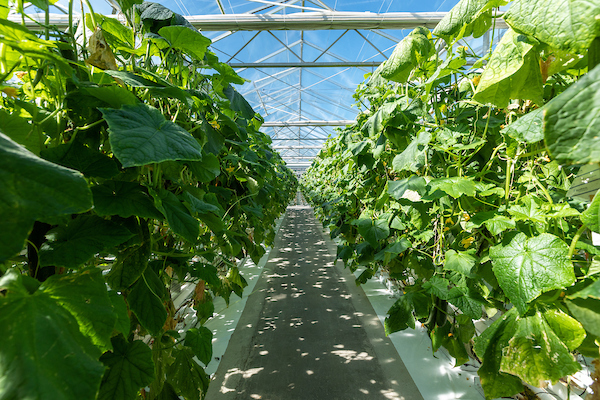Please click here to access the main AHDB website and other sectors.
- Home
- Knowledge library
- Hygiene measures for the control of Mycosphaerella
Hygiene measures for the control of Mycosphaerella
This information was last updated in 2015.
Managing hygiene is extremely important at all stages of the cropping cycle - from pre-cropping to the end of the season. Read on to learn how to use good hygiene practice to help avoid and control this pathogen.
End of season
Hygiene measures include:
- Clearing away all crop residues
- Cleaning and disinfecting the glasshouse
- Cleaning and disinfecting floor surfaces
- Cleaning and disinfecting all materials with a proprietary-approved disinfectant (Jet 5, Fam 30, sodium hypochlorite etc.)
All crop residues should either be removed off-site immediately or covered to prevent spore liberation and re-infection of new crops.
Cleaning and removal
Thoroughly clean drip stakes and drip lines to remove any potential infection sources.
Wherever possible, avoid storing or composting plant debris on site. If this is necessary, make sure it is well covered to avoid release of air-borne spores that might infect new crops.
Pre-cropping
It is important to avoid any possible re-introduction of contaminated materials. You must ensure the polythene floor covering is laid with two teams to prevent surface contamination with soil.
Pay particular attention to the side walls, the junction with the roadway, and the area around the concrete dollies. Support the structure to ensure you cover all soil.
During cropping
Clean tools regularly with approved disinfectants such as Jet 5.
Remove any infected plants, fallen fruits, leaves, or other debris, daily. Use a closed plastic bag to reduce infection risk.
Remove all crop debris in the pathways to minimise infection risk.
Avoid introducing problems
Use protective coveralls for any visitors. Ensure there is easy access to alcohol gels, and use disinfectant floor mats at the glasshouse entrance.
These should be cleaned and refilled regularly – make sure they are used by everyone.
If workers clean their hands and equipment with soap, alcohol gel or foam, secondary spread of the pathogen is greatly decreased.
Between crops
It is important to remove as much of the old plant material as possible.
To improve Mycosphaerella control, it is important not to leave stumps (stem bases) when removing the old crop.
Ideally, it is best to slice through the slab-block interface and leave the block attached to the plant. That way, it is all removed at the same time.
If this is not practical, then cut through the stem as close to the block surface as possible. This avoids leaving any residual stem tissues that might harbour the infection and release ascospores into the glasshouse air.
Spores could transfer
Remember: the new plant goes in right next to the old plant. This will allow spores to transfer from the old stem if you leave any of it in place.
Once the old crop is removed, it is best to disinfect the glasshouse floor using an appropriate disinfectant sprayed in high volume (to the floor or air fogged).
This disinfectant treatment increases the turnaround time between crops but can be worthwhile in reducing levels of infection in following crops.
Where possible, avoid storing or composting plant debris on site. When this is necessary, make sure it is well covered to avoid release of air-borne spores that might otherwise infect new crops.
 Gary Naylor Photography
Gary Naylor Photography
During cropping it is key to keep floors clean, disinfected and free of debris which could host pathogens.
Useful links
Find more information and resources on cucumber
Download a PDF version of the original factsheet on Mycosphaerella
Authors
This information was originally authored by Aleid Dik and Martin McPherson

